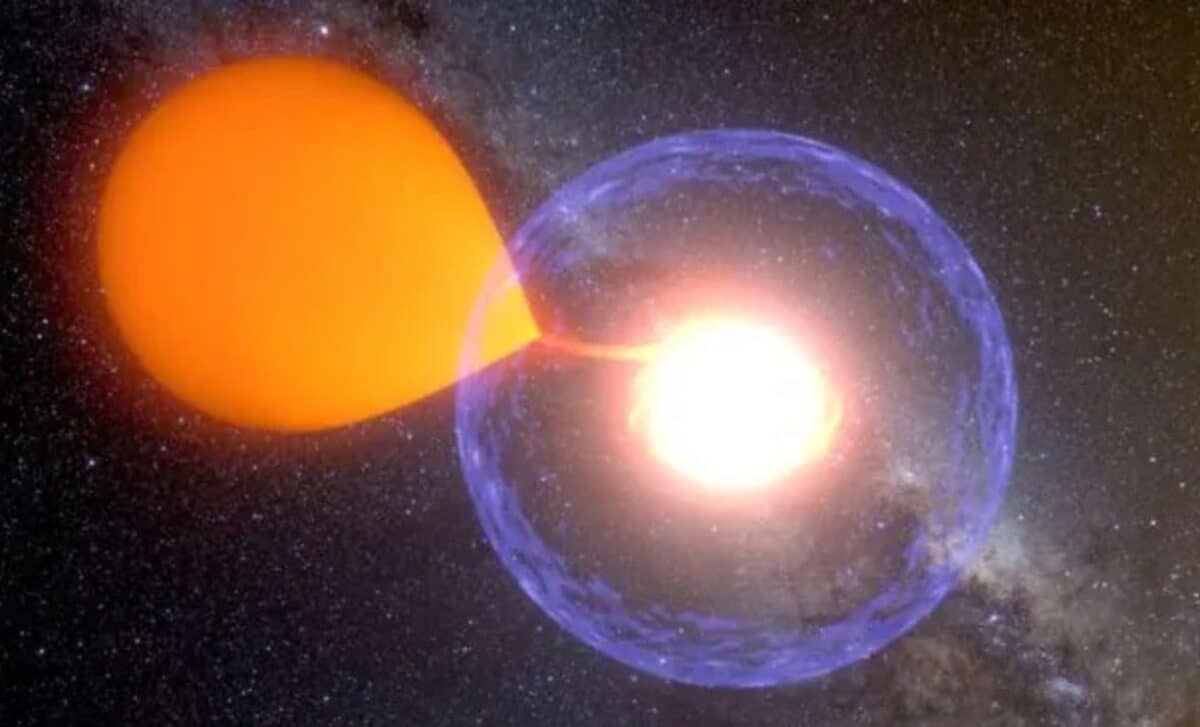
Lydia Amazouz Published on December 25, 2024
Collected at: https://dailygalaxy.com/2024/12/millinovas-cosmic-explosions-brighter-sun/
A groundbreaking astronomical discovery has unveiled millinovas, a previously unknown type of cosmic explosion that shines 100 times brighter than the Sun. These explosions, detected by researchers analyzing data from satellite galaxies of the Milky Way, exhibit unique characteristics that set them apart from known stellar phenomena like novae or supernovae. Millinovas are thought to occur in binary star systems where a white dwarf feeds on material from a subgiant companion, leading to outbursts of intense heat and X-ray radiation.
The discovery, published in the Astrophysical Journal Letters by a team from the University of Warsaw, marks a significant advancement in the study of stellar remnants and transient phenomena. This new class of explosions, characterized by their symmetrical, triangle-shaped outbursts, offers fresh insights into the mechanics of stellar interactions and their broader implications for cosmic evolution.
How Millinovas Were Discovered
The journey to uncovering millinovas began unexpectedly. The research team, led by Przemek Mróz, was analyzing 20 years of data from the Optical Gravitational Lensing Experiment (OGLE) to search for primordial black holes in the Milky Way’s dark matter halo. While they did not find evidence of these elusive black holes, the analysis revealed a group of stars displaying peculiar outburst patterns.
“We came across a group of outbursting variable stars exhibiting very characteristic triangle-shaped symmetrical outbursts that did not resemble any previously known variable stars,” said Mróz. This accidental discovery led to the identification of 28 millinovas in the Large Magellanic Cloud (LMC) and the Small Magellanic Cloud (SMC), two nearby satellite galaxies.
One standout event, OGLE-mNOVA-11, entered an outburst phase in November 2023, enabling the researchers to conduct detailed observations. Using the Southern African Large Telescope (SALT), they detected emission lines from ionized helium, carbon, and nitrogen, signifying extreme temperatures. NASA’s Neil Gehrels Swift Observatory further confirmed X-ray emissions from this source, with the gas temperature estimated at over 1 million degrees Fahrenheit (600,000 degrees Celsius)—around three times hotter than the hottest known stars.
What Are Millinovas?
Millinovas represent a new class of transient X-ray sources. Unlike classical novae or supernovae, millinovas are thought to involve white dwarfs paired with subgiant stars in close binary systems. These systems have orbital periods of just a few days, allowing material from the subgiant to transfer to the white dwarf.
The material transfer process triggers localized explosions, but the intensity is far lower than that of supernovae. “We think that millinovae are binary star systems composed of a white dwarf and a subgiant star, a star that has exhausted the hydrogen in its core and expanded,” explained Mróz. These explosions are unique in their intensity and frequency, with some millinovas repeating every few years while others occur only once during observation periods.

The Role of X-Ray Emissions
The exact mechanism behind the X-ray emissions from millinovas remains uncertain, but the team has proposed two hypotheses. According to Mróz, the X-rays might originate from a belt around the white dwarf’s equator, where the incoming material collides with its surface. Alternatively, a weak thermonuclear runaway on the white dwarf’s surface could produce the observed radiation. In this scenario, the explosion is so mild that little to no material is ejected, allowing the white dwarf to continue gaining mass.
If this mass accumulation continues, the white dwarf could eventually reach a critical point, leading to a Type Ia supernova. These supernovae are invaluable to astronomers as “standard candles” for measuring cosmic distances due to their predictable luminosity. This connection suggests that millinovas might serve as progenitors for such events, offering a unique opportunity to study the precursors to Type Ia supernovae.
Characteristics of Millinovas
- Location: Found in the Large and Small Magellanic Clouds.
- Brightness: 100 times brighter than the Sun.
- Temperature: Over 1 million degrees Fahrenheit (600,000 degrees Celsius).
- Frequency: Some millinovas repeat every few years, others occur once.
- Composition: Emission lines from helium, carbon, and nitrogen suggest extremely hot conditions.
- Progenitor Systems: Binary star systems with a white dwarf and a subgiant companion.

Leave a Reply